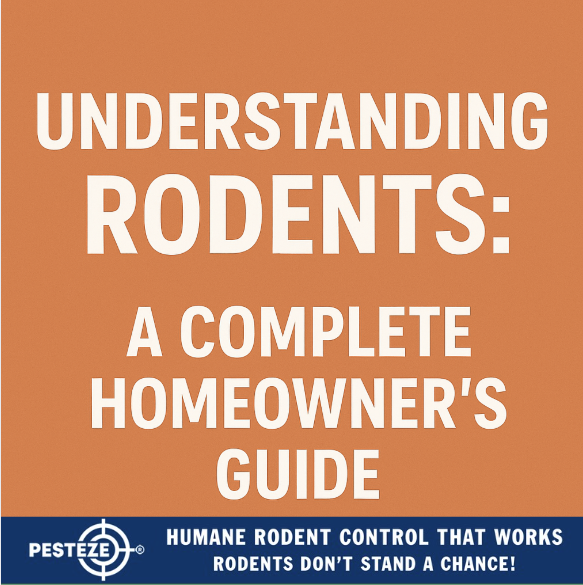UNDERSTANDING RODENTS: A COMPLETE HOMEOWNER’S GUIDE

UNDERSTANDING RODENTS: A COMPLETE HOMEOWNER’S GUIDE
SUMMARY
Rodents are among the most common household pests, known for causing property damage, contaminating food, and spreading diseases. This guide helps homeowners understand rodent behavior, species differences, and effective management strategies to keep homes safe and rodent-free.
FEATURES
-
Species Identification: Learn the traits of mice, Norway rats, and roof rats.
-
Behavior Insights: Understand nesting, feeding, and travel patterns.
-
Health Risks: Recognize the dangers of rodent-borne diseases.
-
Prevention Techniques: Apply sanitation, sealing, and storage methods.
-
Control Options: Explore trapping, baiting, and professional services.
-
Long-Term Protection: Use integrated pest management for lasting results.
GUIDE DESCRIPTION
Rodents are one of the most adaptable and persistent pests homeowners face. Understanding their habits, species, and potential risks is key to preventing infestations and protecting your home. This guide provides essential insights for homeowners who want to take control of rodent issues.
The first step is species identification. Common household rodents include house mice, Norway rats, and roof rats. House mice are small, with pointed noses and large ears, while Norway rats are larger, heavier, and often burrow near foundations. Roof rats, in contrast, are slimmer climbers that prefer attics and upper areas. Knowing which rodent is present helps determine the best control strategy.
Rodent behavior plays a major role in how infestations spread. They are nocturnal, traveling along walls and leaving droppings or rub marks as signs of activity. Rodents seek food, water, and shelter, often nesting in hidden places such as attics, basements, and behind appliances. Because of their rapid breeding rates, even a small presence can turn into a full infestation quickly.
Health risks associated with rodents are another major concern. They can spread diseases such as hantavirus, salmonella, and leptospirosis through droppings, urine, and bites. They also carry parasites like fleas and ticks, which can further affect humans and pets. Preventing infestations protects both property and family health.
Effective prevention relies on sanitation, exclusion, and proper storage. Keeping food sealed, garbage bins closed, and clutter minimized makes homes less attractive. Sealing cracks and openings with durable materials prevents rodents from entering. Outdoors, trimming vegetation and keeping firewood away from the home reduces shelter opportunities.
When infestations occur, control options include traps, bait stations, and in severe cases, professional pest control services. Snap traps are effective for small infestations, while baiting systems and professional-grade methods may be required for larger problems.
For long-term results, integrated pest management (IPM) is recommended. This approach combines regular inspections, ongoing sanitation, structural maintenance, and safe control methods to keep rodents away sustainably.
By understanding rodent behavior, risks, and prevention methods, homeowners can protect their properties, safeguard their families, and maintain a rodent-free environment.
- Aahna Barma


Comments 0